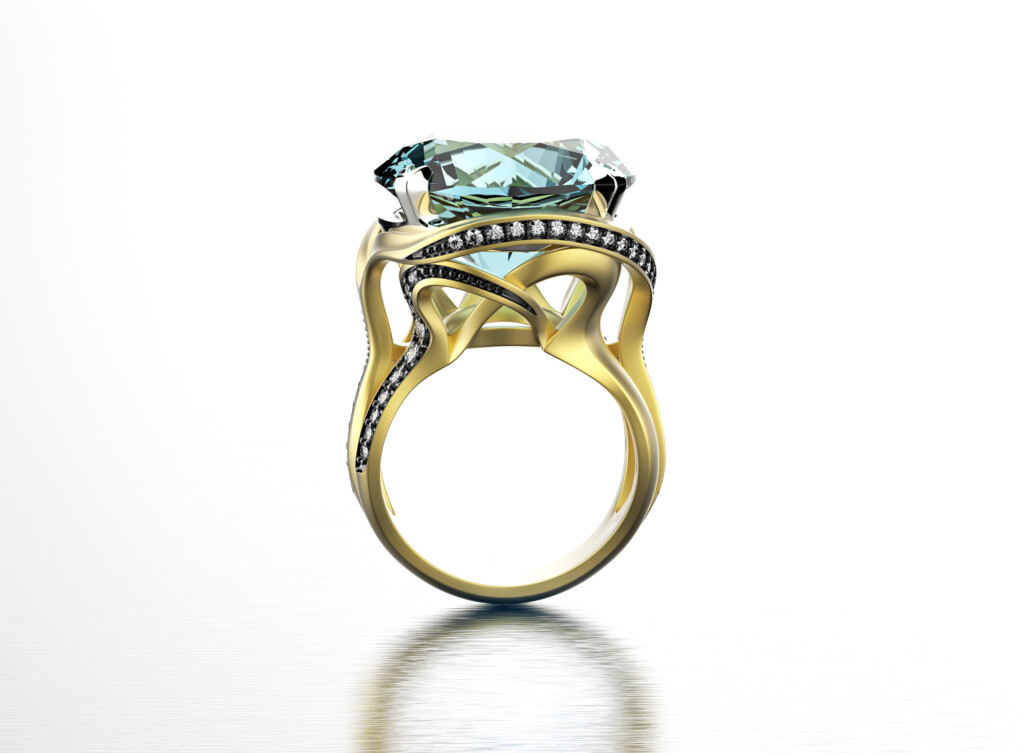When it comes to engagement rings, diamonds have long reigned supreme as the traditional gemstone of choice. However, as couples seek more unique and meaningful ways to express their love, alternative gemstones like emeralds are growing in popularity. Their lush green hue, historical significance, and rarity make emeralds an intriguing option for engagement rings. But are they truly a good choice for such a significant piece of jewelry? This article delves into the pros and cons of emeralds for engagement rings, helping you decide if this gemstone is the right fit for your symbol of eternal love.

1. The Timeless Beauty of Emeralds
Emeralds have captivated people for centuries with their vivid green color. Often associated with royalty, emeralds were favored by figures such as Cleopatra, who adored the gem for its beauty and symbolism. The vibrant green of emeralds symbolizes renewal, hope, and the promise of a fresh start—making it an ideal choice for an engagement ring, which itself is a symbol of a new journey together.
Emeralds belong to the beryl family, and their distinct color comes from trace amounts of chromium or vanadium. The depth and intensity of the green can vary, but the most prized emeralds display a rich, velvety green that is unmistakably luxurious. The gemstone’s association with the natural world also makes it popular among couples who want to convey their connection to nature and the Earth.
2. Symbolism of Emeralds
The symbolism of emeralds goes beyond their stunning color. Throughout history, emeralds have been linked to various myths and beliefs. Ancient Romans believed that emeralds represented Venus, the goddess of love and beauty. In many cultures, emeralds are thought to have protective powers, providing safety and fostering harmony in relationships.
For an engagement ring, the symbolism of love, loyalty, and protection resonates deeply with many couples. Choosing an emerald can make the ring feel more personal and meaningful, adding a layer of depth to the commitment it represents.
3. Rarity and Value
Emeralds, like diamonds, are considered precious gemstones, but they are generally rarer than diamonds. High-quality emeralds that exhibit vibrant color and clarity are especially scarce, making them a unique and exclusive option for engagement rings. Rarity often translates to value, meaning that an emerald engagement ring can be just as valuable if not more so, than a diamond ring, depending on the gemstone’s quality.
While diamonds are graded on a strict scale that measures cut, clarity, color, and carat weight, emeralds are evaluated primarily on color. The most sought-after emeralds are a deep, bluish-green, with good saturation and transparency. When you choose an emerald for your engagement ring, you are not only investing in a beautiful gem but also a piece of history and rarity.
4. Durability: The Pros and Cons of Emeralds
One of the most critical factors to consider when selecting a gemstone for an engagement ring is its durability. Engagement rings are worn daily and often exposed to knocks, scratches, and other impacts. While emeralds are undeniably stunning, they do have a downside when it comes to durability.
Emeralds rank 7.5 to 8 on the Mohs hardness scale, which is significantly lower than diamonds (which rank a perfect 10). This means that emeralds are more prone to scratches, chips, and breakage if not treated carefully. Unlike diamonds, which can withstand a lot of wear and tear, emeralds require more cautious handling to ensure they last a lifetime. If you or your partner leads an active lifestyle, you may need to think carefully about whether an emerald is suitable for everyday wear as an engagement ring.
On the upside, emeralds that have been treated with modern enhancements, such as oiling, can be more resistant to damage. Many jewelers can also advise on protective settings that shield the emerald from potential harm. Bezel settings, for instance, encase the gemstone entirely, offering more protection compared to a prong setting that leaves the gem more exposed.
5. Uniqueness and Personal Style
One of the most significant advantages of choosing an emerald engagement ring is the uniqueness factor. While diamonds remain the most popular gemstone for engagement rings, selecting an emerald sets you apart from the crowd. Couples who opt for an emerald engagement ring often do so because they want something unconventional and memorable. The green hue of emeralds evokes a sense of mystery and romance, making the gemstone perfect for those who want their ring to reflect their distinctive style.
Additionally, an emerald’s color can beautifully complement various metals, including platinum, white gold, yellow gold, and rose gold. This versatility makes it easier to create a ring that aligns with your partner’s taste and personality. The green of the emerald contrasts elegantly with diamonds or other gemstones, adding even more charm to a multi-stone ring design.
6. Affordability and Budget Considerations
While high-quality emeralds can be expensive, they are often more affordable than diamonds of comparable size. For couples on a budget who still want a large center stone, an emerald could be a cost-effective yet luxurious choice. When considering affordability, it’s essential to weigh the factors that influence the price of an emerald, such as color, clarity, and whether it has been treated for enhancements.
Inclusions, or internal flaws, are common in emeralds and can sometimes affect the price. However, many people appreciate these inclusions, often referred to as the “jardin” (French for “garden”), because they add character to the stone. These inclusions do not necessarily diminish the beauty of the gem and can even enhance its natural allure.
7. Care and Maintenance
As previously mentioned, emeralds require more care and maintenance compared to diamonds. The inclusions and lower hardness level mean that you’ll need to be more vigilant in how you care for the ring. Regular cleanings and occasional professional checks are essential to maintain the gemstone’s clarity and luster over time.
Emeralds should also be kept away from harsh chemicals, extreme temperatures, and ultrasonic cleaners, as these can weaken the stone. A soft brush and mild soap solution are the safest options for cleaning an emerald ring at home. Proper storage, such as keeping the ring in a soft pouch or separate from other jewelry, can also help prevent scratches and other damage.
8. Finding the Right Jeweler
Choosing an emerald engagement ring requires more specialized knowledge than purchasing a diamond. Finding a reputable jeweler who understands emeralds and their particular needs is crucial. A skilled jeweler can guide you in selecting the right stone, ensuring you get an emerald with the best color and clarity for your budget.
It’s also essential to ask about treatments, as many emeralds are oiled to enhance their appearance. While oiling is a standard practice, it’s important to understand the extent of any treatments and how they may affect the longevity and care of the gemstone.
9. Celebrities and Emerald Engagement Rings
Emerald engagement rings have recently gained a surge in popularity, thanks in part to celebrity endorsements. Stars like Halle Berry and Jackie Kennedy famously sported emerald engagement rings, bringing this luxurious gemstone into the spotlight. This trend toward choosing colored gemstones over traditional diamonds has inspired many couples to consider alternatives like emeralds.
Celebrities often favor emeralds not only for their beauty but also for the statement they make. In an industry where standing out is paramount, the rich green hue of emeralds offers a bold, attention-grabbing look that complements both modern and vintage-inspired ring designs.
10. Is an Emerald Engagement Ring Right for You?
Ultimately, whether an emerald is a good choice for your engagement ring depends on your priorities. If you value uniqueness, symbolism, and the lush beauty of a green gemstone, then an emerald can be an excellent option. However, it’s essential to consider the stone’s relative fragility and the care it will require.
For couples who want a non-traditional engagement ring that carries a rich history and deep meaning, the emerald can be a wonderful, luxurious choice. However, if durability and daily wear are your top concerns, you may want to explore other gemstones or consider protective settings to ensure the longevity of your ring.
In the end, the best engagement ring is one that reflects the unique love story you and your partner share, and an emerald can certainly be a stunning, meaningful part of that story.



